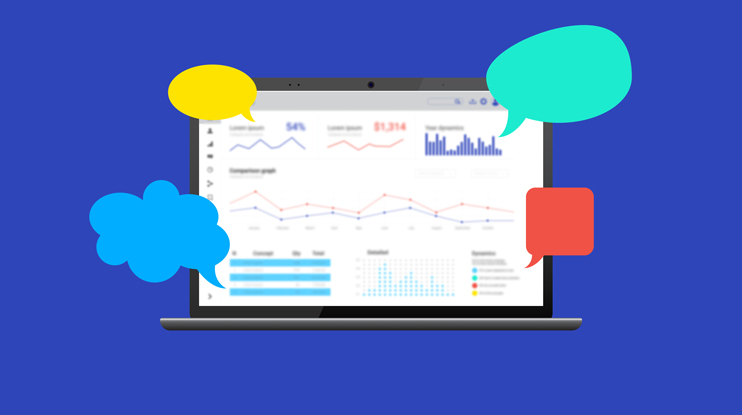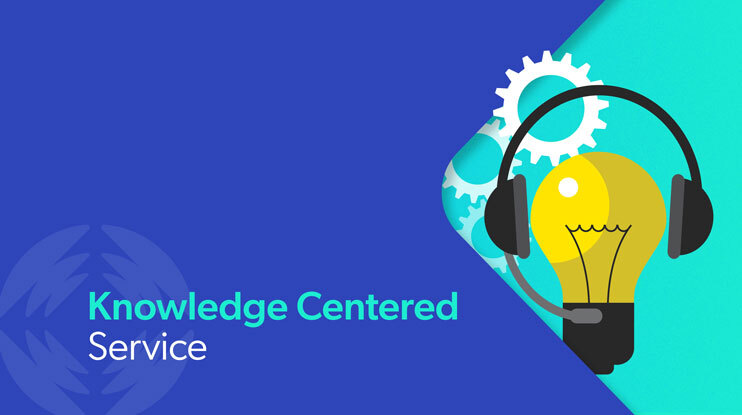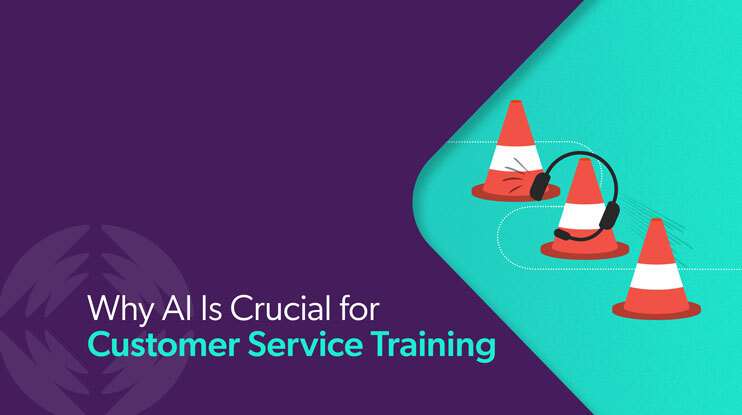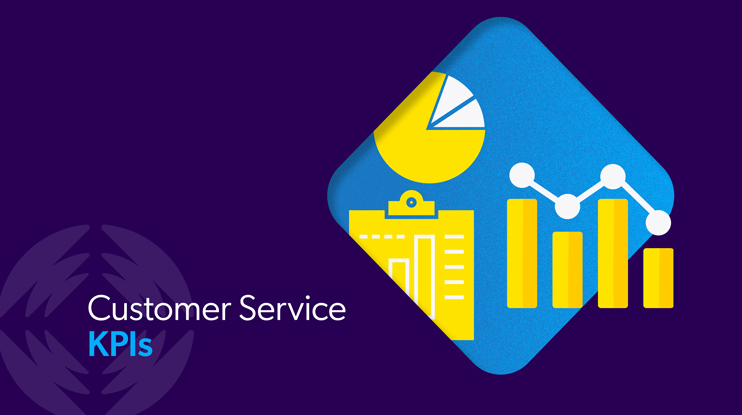For 20 years, Net Promoter Score (NPS) has been a top metric for gauging customer sentiment. It helps businesses establish a baseline around two important measures of good customer experience: loyalty and satisfaction. But NPS gives you zero insight into why customers feel the way they feel.
What viable NPS alternatives are there? Or can you pair NPS with another technology that can help?
Here we take a look at search analytics — not as a replacement, but as an adjunct to filling in the missing pieces. In fact, in Coveo’s 2023 Tech Survey, 93% of IT, technology, and business stakeholders we surveyed said that search analytics are a valuable source of business intelligence.
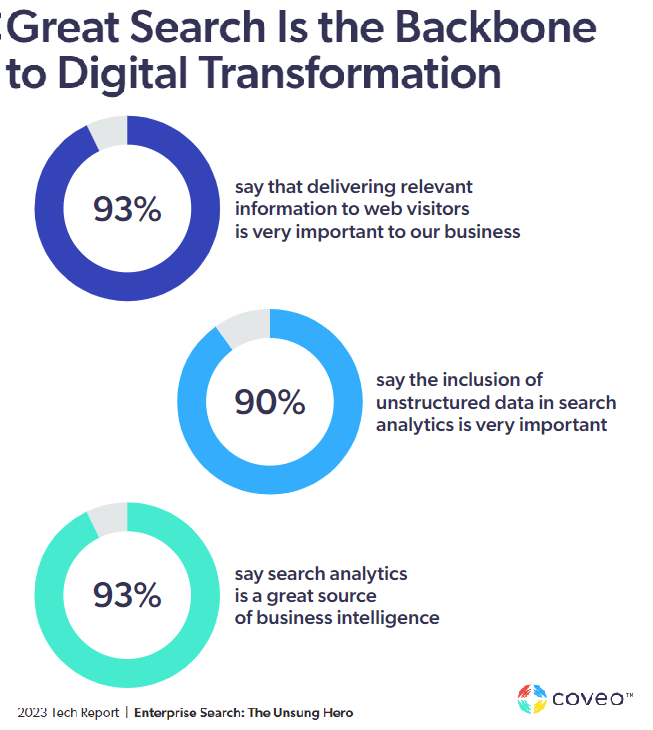
That makes sense. While NPS uses survey-based customer feedback to provide a snapshot of customer sentiment, search analytics use real-time user provided data to help businesses understand the intent behind a user’s behavior. This is reliable and comprehensive — information that adds context to NPS.
Understanding NPS Score (Net Promoter Score)
Calculating your NPS starts with asking a version of the following question: “From 1-10, how likely are you to recommend our company?” Respondents are bucketed into three groups as follows:
- Score 9-10: Promoters – Your company’s most dedicated and enthusiastic customers and the most likely to recommend you to friends and family.
- Score 7-8: Passives – These are neutral customers. They won’t necessarily recommend you, but they also won’t complain about you on Facebook. Passives have the high potential to become Promoters, assuming you figure out what’s holding back their enthusiasm.
- Score 0-6: Detractors – The people least likely to do business with you again. In the best-case scenario, Detractors will leave without looking back. In the worst scenario, they’ll actively recommend that people avoid you. The lower the score, the more likely detractors are to discourage people from doing business with you.
To get your aggregate NPS, use the following formula:
NPS = % of Promoters – % of detractors
Why Companies Use an NPS Score
Companies collect NPS data using post-purchase surveys or by posing the magic question at various touch points along the customer journey. One of the main criticisms of NPS is the low response rates which can give you skewed results and paint a poor picture of customer success. And, as we already touched on, the ratings are based on a single question which lacks any context about why customers feel the way they do. This makes NPS an impossible metric to improve without additional information.
Given these limitations, it makes sense for businesses to adopt a more comprehensive, data-backed approach to understanding customer sentiment. NPS acts as a starting point, giving you a rough overview of where your company stands when it comes to customer loyalty.
Your search data can provide the information you need to better understand what your customers are experiencing — and where you need to improve the customer journey. This multifaceted approach allows you to be proactive in addressing customer needs and enhancing their overall experience.
The Power of Search Analytics
Website search provides two key ingredients that help you understand user intent. First, they tell you specifically what people are searching for — products, information, questions — it’s all there in your search analytics.
Second, search also helps you understand how people discover content. That is, the paths they take, what they click on based on the results they get, and what they’re not finding that could be considered a roadblock to moving forward.
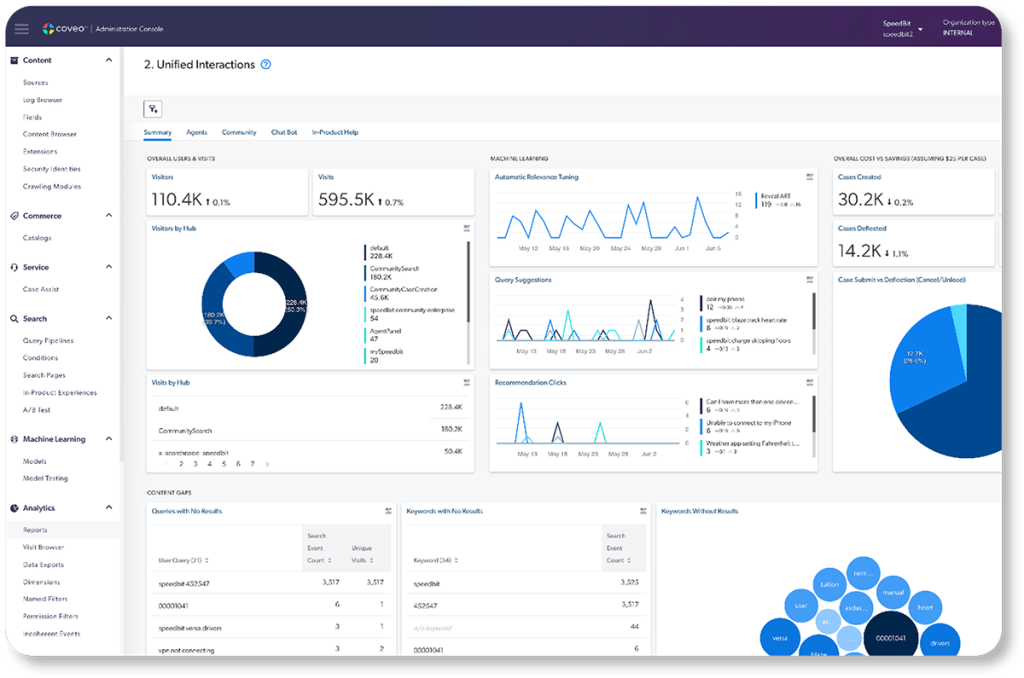
Your search data includes keyword insights, metrics like clickthrough rate (CTR), average click-rank (ACR), and zero-result searches. This offers a wealth of context around why your NPS may not be as high as you’d like it to be.
Search analytics provide real-time data on user intent, preferences, and pain points by:
- Recording events: Events or actions (e.g., clicks, views, searches) are recorded by search platforms like Coveo. For example, our Usage Analytics (Coveo UA) tool captures and stores search data then makes it accessible via dashboards. If said event falls outside of the above described, you can also create custom events.
- Reporting trends: Dashboards like Coveo’s UA dashboard make it easy to identify search trends by helping you visualize data with charts and graphs.
- Customizing reports: Since every company is different, report customization is essential so you can focus on the data most relevant to your goals. You might, for example, want to focus on content gaps so you can create a content strategy focused on filling those gaps.
Search analytics are exceptionally good at uncovering hidden insights and trends in customer behavior because they allow you to track and analyze every action performed by each user. This is a much more granular level of insight versus NPS.
Advantages of Using Search Analytics over NPS
There’s not much you can do with NPS since it’s just one metric, with curated, company-created questions. If your NPS is very high, it’s a great number to showcase to investors or executives, but it’s not going to sell more shoes or lawnmowers because it’s meaningless to consumers.
If your NPS is bad, it means your customers are unhappy. But then what?
Unlike NPS, search analytics are inherently flexible and scalable — and most importantly user-generated information. They can be applied across various platforms and are relevant regardless of your industry or business type. That makes search data a reliable and versatile tool for all businesses, regardless of size.
Search Analytics Benefits
With search analytics, you get:
- Real-time insights: It can take months to get feedback from NPS surveys versus instant access to insights buried in your search data. Since this data is being collected in real-time and can be viewed in real-time, it’s often more relevant based on what’s happening in, you guessed it — real time.
- Actionable strategies: Thirty-two percent of the 4,000 respondents in our 2023 Website Relevance Report said it’s hard to find what they want on a website. This has huge implications for usability and customer experience. Understanding the roadblocks that frustrate people as they navigate your website is the only way to improve the experience. (And thus your NPS score.)
- Granular understanding: Unlike the single NPS question, which gives you one answer to a very broad topic, search analytics provide detailed insights about your website experience from the customer’s perspective. They use data from specific user queries and interactions which allows you to measure user adoption (who’s using your website, where are they located, what search interfaces do they prefer?), identify content gaps, discover relevance issues, and more.
- A competitive advantage: Your search analytics can reveal market trends, consumer behavior, and customer preferences. This makes you more competitive since it allows you to identify issues as they’re happening and pivot your strategy much more quickly than if you had to wait months for NPS survey results.
Search Analytics Success Examples
Here are two examples of companies that have successfully used search analytics to improve their customer experience:
NetApp, a leading cloud data management provider, achieved a 4.5/5 customer satisfaction (CSAT) score with the help of search analytics. This was part of a larger initiative to provide a better user experience to their 38,000 global customers.
NetApp first improved the search experience by combining 25 data sources into one unified search index made easily searchable with Coveo’s intelligent search engine. NetApp then used the search analytics from this improved experience to optimize and act on their search data in real time.
Informatica, a leading enterprise cloud data management platform, leveraged superior search, including search analytics, to achieve $3.5 million in annual savings from explicit case deflection. They increased their NPS to 4.1, up from 3-3.5, by improving customer and employee experiences by surfacing more relevant content to users, filling content gaps, and enabling service agents to find information much more easily.
This wouldn’t have been possible without the level of granular information available from search analytics.
Challenges With Search Analytics vs. NPS
NPS is simpler and less costly to implement. But this simplicity comes at the cost of actionable knowledge. NPS lacks the depth of search analytics. To address the limitations of both, you can adopt a hybrid approach, using NPS as a preliminary gauge of customer sentiment and search analytics to delve deeper into the ‘why’ behind your NPS scores.
On the other hand, search analytics offer a treasure trove of insights, it isn’t without challenges. Simple search will not suffice. Therefore you will need to Implement a robust search platform that uses machine learning to determine intent. Further, large enterprises have disparate data sources and legacy systems that make integration and data indexing challenging.

NetApp and Informatica both chose Coveo because of its ability to easily unify data from different data sources through its array of 50+ native connectors.
Rather than thinking of them as competitors, think of NPS and search analytics as complementary tools. NPS is a broad temperature check and search analytics more of a diagnostic deep dive. Both can help you focus on strategies that build customer relationships, improve customer retention rate, and reduce customer churn.
Balancing the information you get from both is what gives you a holistic understanding of your customers’ experience so you can develop a roadmap for how to improve it.
Search & NPS Map the Way to Customer Satisfaction
Good experience equals good ROI, with Zippia reporting that companies who are focused on improving customer experience typically see an 80% increase in revenue. This makes it well worthwhile to get granular when it comes to understanding why your NPS score may be lower than you’d like.
With search analytics, you can get down in the weeds and begin working on tangible ways to improve the experiences that matter most to your customers, employees, and users.
Your search analytics and your NPS measurement can successfully work together to help you understand your customers and improve their experiences. The former offers deeper insights than the traditional NPS approach, but both are powerful tools for mapping the way forward when it comes to optimizing website experiences.

